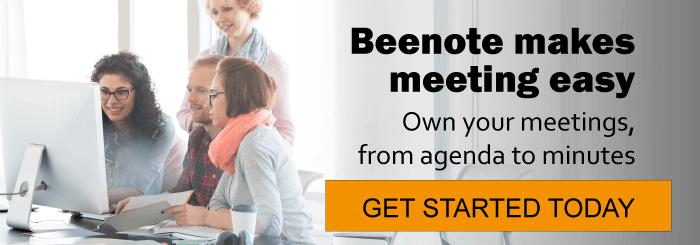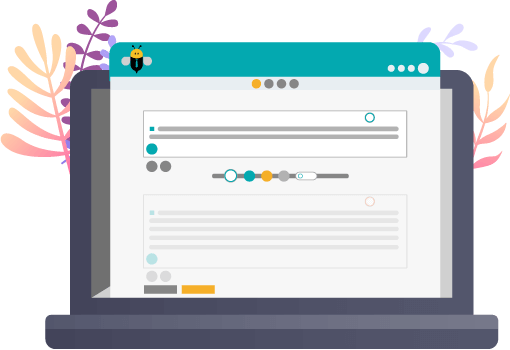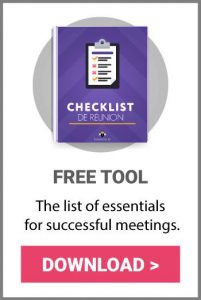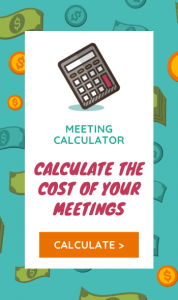Writing a detailed agenda is a crucial step in any meeting planning. It allows you to be well prepared in addition to allowing participants to do the same.
This document, which you normally send to all participants before the start of a meeting, should detail the main objective and all the points to be discussed.
If it’s not in your habits to write an agenda, be aware that it can be a great way to improve your meetings, to make them more effective. All your teammates will be better prepared for meetings. Having an agenda will save you and your team, a lot of time.
The value of having an agenda in a meeting
- There will be no more forgetting, all subjects will be presented.
- A guideline.
- Provide information on the progress of current team projects, achievements, and priorities.
- Respect the time allotted to each subject. This avoids too long meetings. You can even have a timekeeper!
- Allows you to stay focused on the topics listed. This avoids losing time to discuss the youngest at Sophie or Bob’s new car.
To help you write an agenda according to the rules of the art, I share a few tips and tricks to make your job easier!
Your agenda should include these 6 elements:
1. Basic information must be listed first:
- Meeting title should be in line with the Objective
- Date: Choose a date and time that suits everyone
- Start and end time of the meeting
- Meeting room or place
2. Determine the meeting type
Board meeting, executive meeting, scrum, online meeting, brainstorming, walking meeting, monthly, etc.
3. Meeting roles
- Invite the right people who should be present.
- Define the roles of each participant: leader, partners, participants, and guests
4. The main objective of the meeting
Define the main meeting purpose. This will be the guideline for determining what to say in your presentation.
5. Topics to be discussed
Define topics related to the objective. I suggest you start with the most important and informative topics because, at the beginning of the meeting, people’s attention is at its zenith. Finish your meetings with the subjects who need participation in order to awaken all people.
Determine the purpose of each topic: inform, exchange, generate ideas, consult, or decide.
Add to each item the person in charge names to each of the items on the agenda. Participants will, therefore, have all the information in order to prepare themselves adequately.
Set the length of each topic and thus, the total meeting duration. The ideal length of a meeting: between 30 and 60 minutes. Participants will certainly appreciate this time indicator.
In the end, it is preferable to have this important item: Any other business.
6. Share the agenda with your colleagues
Before sending the final agenda, ask your colleagues if they have any other items to add. This will save you a lot of time and multiple emails. With the use of a meeting management solution, you can integrate your colleagues into the agenda writing process easier and save time.
Finally, share your agenda with everyone by email, your colleagues will be well prepared. This also validates that everything is compliant and that no subject is forgotten.

Elements to consider for a successful agenda
- Invite your teammates to participate in the planning of the agenda. If it is always the same person who sets the agenda, it might be worthwhile to change once in a while. This could be a good way to engage the people on the team to participate a little more in your meetings.
- If you have meetings that need to be longer than usual, plan some breaks to move or stretch. You can also plan some snacks.
- At the beginning of your meeting, in order to respect the agenda you have established, you can:
- Share and read the agenda, with a focus on time set for each item,
- and, when appropriate, minutes approval of the last meeting.
Use our agenda templates
Feel free to use our free agenda templates according to your type of meeting! This way, you will already have a basic framework to create your own according to your needs. We have made it easier for you with our following agenda templates:

Last-minute meeting? Build your agenda on the spot!
On occasion, a last-minute meeting may interfere with your schedule and you don’t have an agenda ready. Don’t panic, here’s what I do:
- Set a shortlist of items that need to be discussed.
- Plan the maximum time for the meeting and then determine priorities.
- Take notes to complete your minutes afterward.
- You could even record your meeting.
- There are some web solutions like Beenote that could help you run your meeting.
In conclusion
Writing an agenda may be time-consuming, and that could explain why people are not into it. But, on the other hand, when available, people are better prepared and the meeting will be a better experience and not a waste of time.
My secret for the best agenda planning and writing is to use meeting management software. Writing an agenda will always be easier!
And you, what are your tips for writing an agenda?









0 Comments